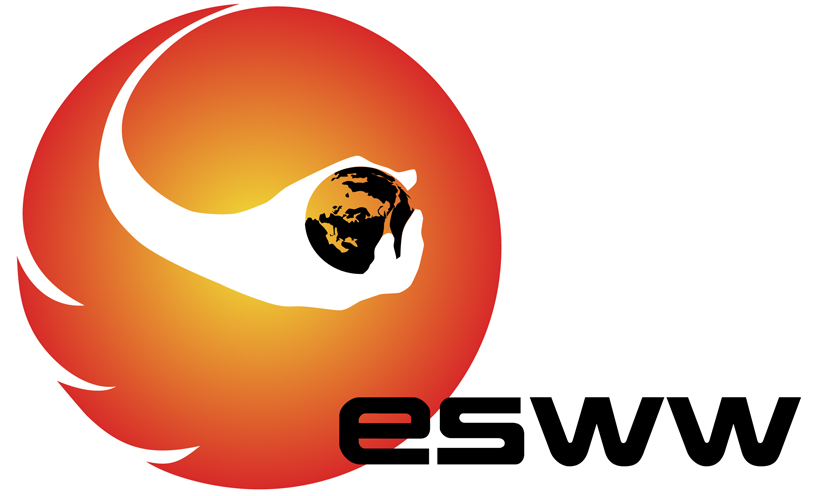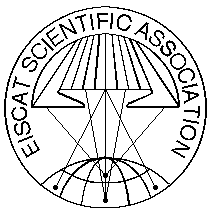
November 5 - 9, 2012, Brussels, Belgium
Spacecraft Operations and Space Weather
| Session: | Session 4a Spacecraft Operations and Space Weather |
| Date: | Thursday 8 November 2012 |
| Chair: | R. Horne (British Antarctic Survey, UK) & D. Pitchford (SES) |
| Remarks: |
10:30-10:45 Splinter wrap up
10:45-11:30 Coffee Break & Poster Session 12:30-14:00 Lunch |
| Time | Title | ||
| 09:00 | Overview of space weather impacts on satellites Ryden, Keith A. QinetiQ Fellow, UNITED KINGDOM Our reliance on space infrastructure is growing and its potential vulnerability to space weather is becoming a cause of concern at high levels in government and elsewhere (for example with space insurers), especially in the context of extreme storm events such as the Carrington Event of 1859. However previous experience of space weather does not necessarily lead to us to ‘Armageddon’ scenarios for the global fleet of satellites, not least because of the careful engineering adopted in space projects. On the other hand it is clear that over the years many satellites have suffered space weather-induced anomalies, outages and failures often due to apparently quite minor storm events. This paper will provide an overview of the historical experience of space weather in practical terms, the engineering reasons for problems and failures, the complex interplay with commercial and security interests and will aim to set out some of the key challenges for the future. | ||
| 09:20 | The Space Environment - A satellite manufacturer's perspective Daniel Tye Surrey Satellite Technology Limited (SSTL), UNITED KINGDOM The Space Environment Team at SSTL is responsible for the thermal control and for the radiation assurance of the satellite. Here, the effects of the radiation environment in Space is discussed, along with the mitigation strategies that SSTL employs to ensure the risk posed by radiation is managed to a level commensurate to the many other risks involved in spaceflight. SSTL is well-known for employing Commercial Off The Shelf (COTS) electronic components in their satellite products. This approach significantly reduces cost and enhances satellite capability, but exposes components to a radiation environment for which they were not designed. Presented here is an insight into the thought processes, research, testing, and design rules that have enabled SSTL to follow this approach for more than 30 years and 36 satellites - without the premature loss of a satellite through radiation damage. This is backed up by in-orbit data from equipments and some of the many radiation monitors SSTL is flying that show the effects of radiation events on our subsystems and demonstrate the robustness of this approach through changing circumstances. We will also show some case studies and mission highlights. | ||
| 09:40 | Effects of Solar Activity on ESA's Science and Earth Observation
Missions Volpp, Jurgen ESA/ESOC, Darmstadt, GERMANY During the past twenty years ESA launched 16 Science and Earth observation missions. Most of them are controlled from ESOC in Darmstadt, Germany, and are still operational. These missions have a wide range of orbit characteristics: low Earth orbits, Earth bound orbits with high eccentricity between 240 km and 160,000 km altitude, missions at the Lagrange points L1 and L2 and inter-planetary missions. The operational history of the 19 spacecraft involved represents a large pool of data concerning solar activity influencing spacecraft operations. This presentation reports on solar activity events which had operational impact as they affected the solar arrays, the on-board memories, the star sensors or the communication with the spacecraft. The possibility of counter measures and their required reaction time is discussed. | ||
| 10:00 | Commercial Development of MEO: An Insurance Perspective
Wade, David Atrium Insurance, UNITED KINGDOM Medium Earth Orbit (MEO) has primarily been the preserve of
military satellites to date but this will change over the next couple
of years as new commercial satellite projects start to occupy this
region. In 2013 the O3b constellation will be launched. Operating from
a orbit of 9000 km, the O3b satellites will be the first commercial
satellites to orbit in the slot region. By 2015, it is expected that
the first all-electric geosynchronous communication satellite (the
Boeing 702SP) will be launched. Whilst the final destination of such
satellites will be geosynchronous orbit, the use of electric propulsion
for orbit-raising in addition to station-keeping will expose the
satellite to the MEO environment for months as opposed to a
conventional geosynchronous satellite which would typically complete
orbit raising within a few days. Clear commercial advantages exist for
all-electric satellites so manufacturers other than Boeing are also
expected to propose all-electric satellites as part of their product
range in the coming months. | ||
| 11:30 |
Calculation of the Satellite Surface Charging using forecasted low energy Electron Fluxes
Ganushkina, Natalia; Amariutei, Olga Finnish Meterological Institute, FINLAND Modern society depends on a variety of technologies that are susceptible to severe disturbances of the ionosphere and of the near-space environment that are driven by the activity of the Sun. Space weather can adversely affect a wide variety of systems including the space assets such as satellites, manned and unmanned space vehicles and launch vehicles with the addition, although not strictly space assets, of high altitude aviation flights. This study proposes a methodology of forecasting low energy electron population for the study of the effects of the surface charging on spacecraft. We use Inner Magnetosphere Particle Transport and Acceleration Model (IMPTAM), developed by Ganushkina et al. [2001, 2005, 2006], which is a tool to model and forecast the behavior of ring current and radiation belts particles in the inner Earth's magnetosphere. |
||
| 11:50 |
NASA GSFC Space Weather Center operational Experiences over the past several major solar Events
Zheng, Yihua1; Pulkkinen, A.2; Taktakishvili, A.3; Mays, M. L.4; Lee, H.5; Chulaki, A.6; Kuznetsova, M. M.4; Hesse, M.4 1NASA Goddard Space Flight Center, UNITED STATES; 2NASA/GSFC and CUA, UNITED STATES; 3NASA/GSFC and UMD, UNITED STATES; 4NASA/GSFC, UNITED STATES; 5NASA/GSFC and KMA, UNITED STATES; 6NASA/GSFC and Sigma Space Corp., UNITED STATES As a sibling organization of the Community Coordinated Modeling Center (CCMC), the NASA GSFC Space Weather Center has been operational since March 2010 (http://swc.gsfc.nasa.gov). By combining forefront space weather science and models, employing an innovative and configurable dissemination system (iSWA.gsfc.nasa.gov), taking advantage of scientific expertise -- both in-house and from the broader community -- as well as fostering and actively participating in multilateral collaborations both nationally and internationally, NASA/GSFC space weather Center is poised to address NASA's space weather needs (and needs of various partners) and to help enhancing space weather forecasting capabilities collaboratively. With a large number of state-of-the-art physics-based models running in real-time covering the whole space weather domain, it offers predictive capabilities and a comprehensive view of space weather events throughout the solar system. In this presentation, we will share our operational experience over the past several major space weather events and how they affected NASA spacecraft throughout the solar system. |
||
| 12:10 |
Variability of Trapped and Transient Radiation Environment on Highly Elliptical high inclination (Molniya) Orbit
Trichtchenko, Larisa1; Nikitina, Lidia2 1NRCan, CANADA; 2Carleton University, Ottawa, CANADA Our particular interest in analysis of the radiation
environment on Molniya orbit has been motivated by the planned Canadian
operational communication and weather space mission which would also
include operational particle detectors. |
||






